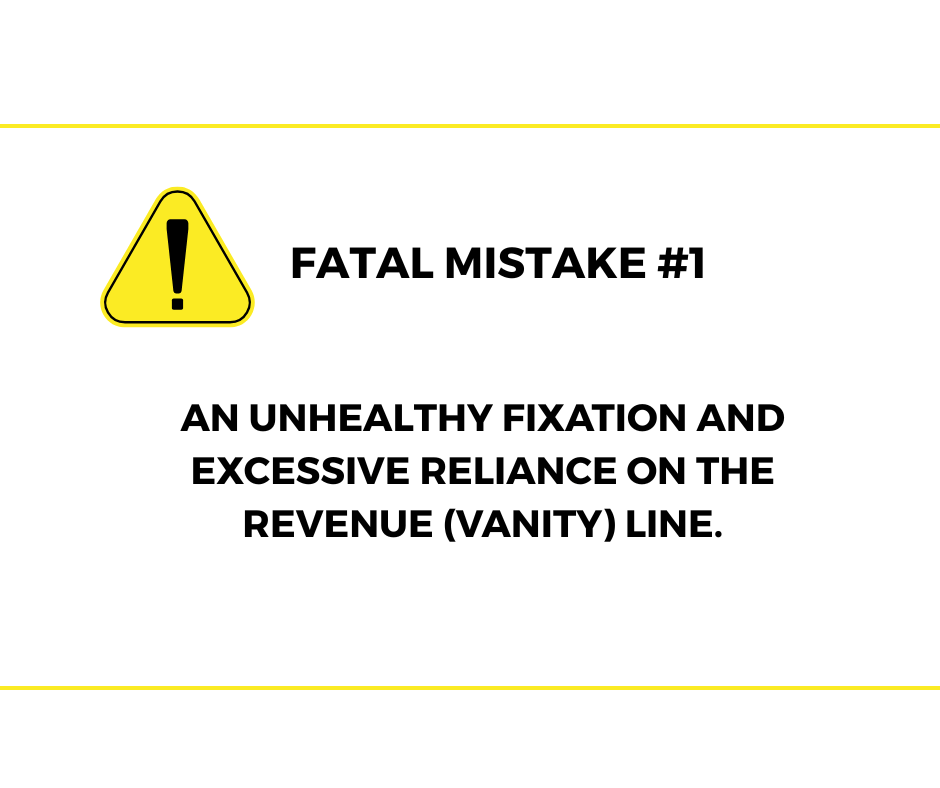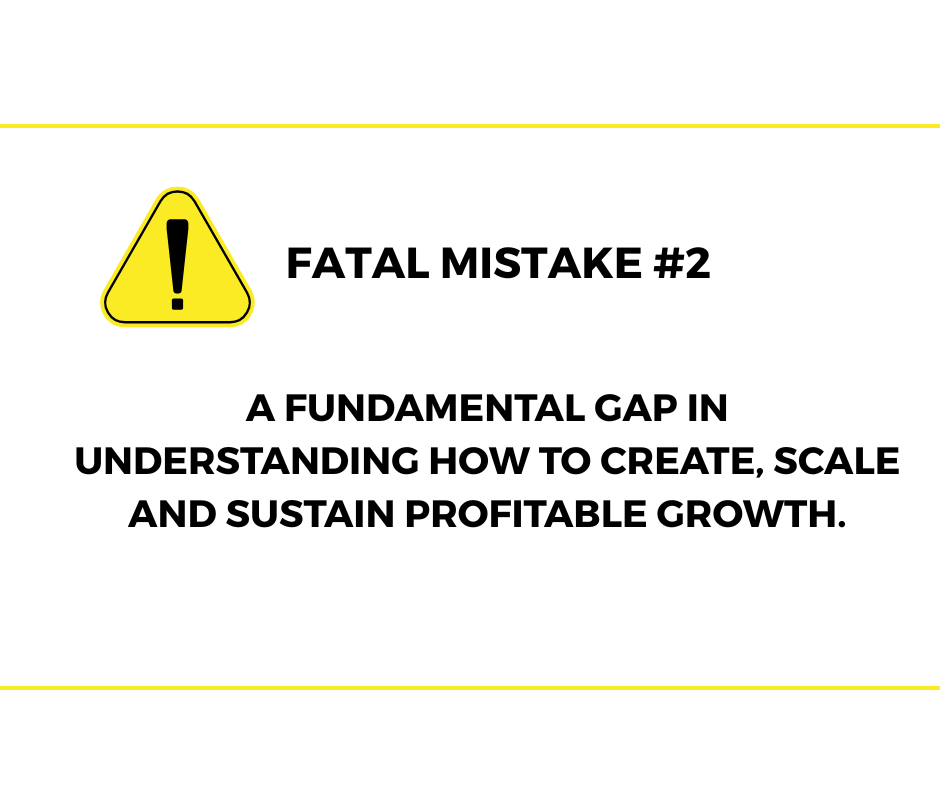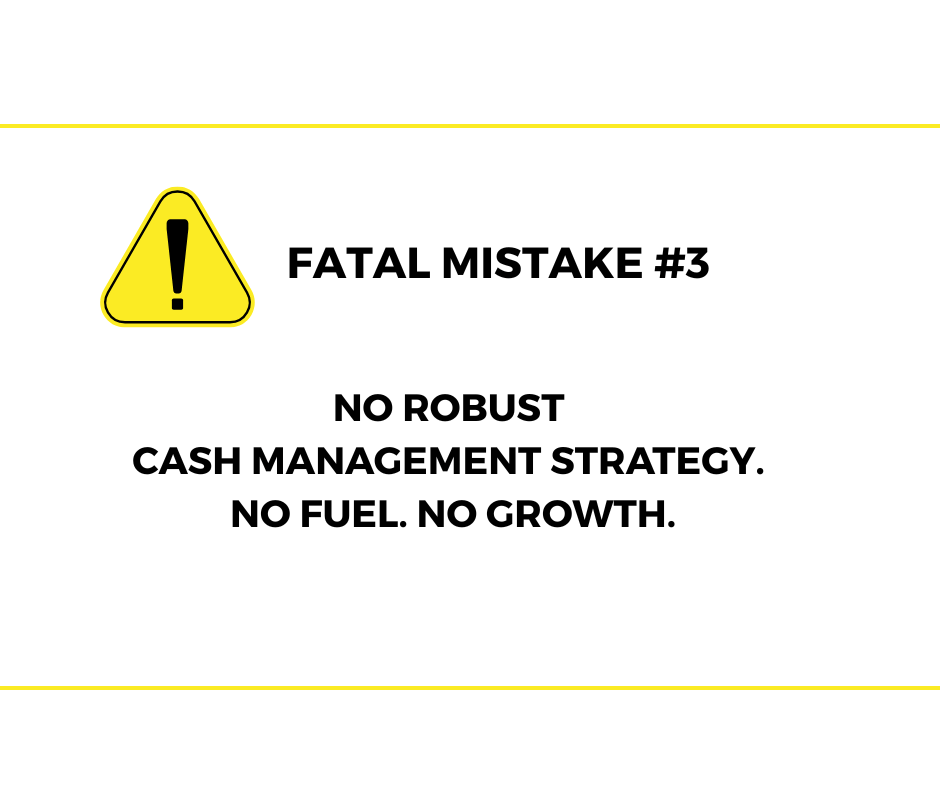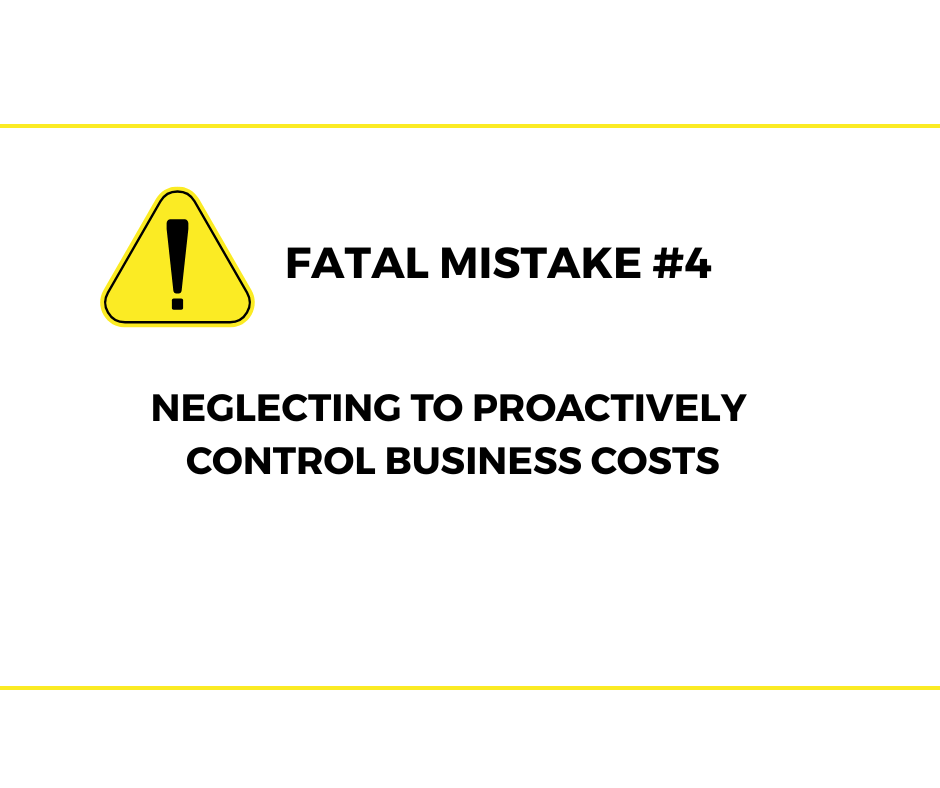No Business Leader, Owner or Entrepreneur goes into business to fail. Yet, navigating the business landscape is fraught with challenges, and the statistics on business failure paint a dismal picture; 20.8% of businesses fail within the first year, 40% fail within the first three years, and 65.8% fail within 10 years. And nearly 80% within 20 years. Even worse, of those that make it, over 80% fail to realise their full potential.
Over the years, I’ve uncovered the seven fatal mistakes that many business leaders unknowingly sleepwalk into, and I wanted to share them with you to help you avoid them.
To avoid being overwhelmed, I’ve divided them into two parts: Part 1 will cover the top four mistakes, while Part 2 (in the July blog) will address the next three mistakes. If you’re extremely keen and would like to know about all seven mistakes now, download the full report – 7 Fatal Mistakes to Avoid When Growing and Scaling Your Business.
7 Fatal Mistakes To Avoid When Growing and Scaling Your Business…

#1 FATAL MISTAKE: If you are a start-up business, it goes without saying that you need to generate revenue through the front door of your business. To achieve this, you must offer a product or service that is in demand in the marketplace and that customers want. Your utopia goal is to create predictable, repeatable, and sustainable revenue streams.
However, once you turn the tap on and revenue starts flowing quickly, your attention should be on ensuring that you are creating profitable revenue streams and generating positive cash flow in your business.
This is where too many business leaders fail to pay enough attention, especially in the early stages of their journey. They are so pleased to acquire a customer that they overlook whether the customer is a ‘good fit or not’. A customer is a customer – they are just grateful to have won one!
As the business grows, they quickly realise that the wrong customers are time bandits— those who constantly complain, don’t pay on time, and are the least profitable.
Please don’t fall into this trap. You don’t want to have a long tail of customers you eventually have to cull because those customers are not the right fit, either financially or culturally.

#2 FATAL MISTAKE: Which would you prefer? A business turning over 1 million pounds and making a £50,000 loss or… A business turning over £500,000 and making a £100,000 net profit?
It’s an easy question to answer, right?
Most leaders are working hard — harder than ever, in fact. But here’s the uncomfortable truth: the reason many businesses plateau or fail isn’t due to a lack of effort; it’s a lack of understanding. Specifically, it’s a lack of understanding regarding how to create, build, and sustain profitable growth.
It’s the silent saboteur. It hides in plain sight, masked by activity, firefighting, and short-term wins. However, behind the curtain, there is no clear growth architecture. No system. No playbook.
And when you don’t have those key ingredients, growth becomes inconsistent, reactive, and dangerously dependent on chance. Profit doesn’t follow busyness. It follows clarity, structure, and strategic execution.
The most successful leaders know this. They’ve made the shift from doing more to doing what matters most. From chasing growth… to engineering it.
In today’s fast-paced, high-stakes business world, growth without profit is just a vanity metric. If you don’t know how to create, build, and sustain profitable growth, you’re not just standing still—you’re moving backwards.
Profitable growth isn’t luck. It’s not a one-hit wonder. It’s a repeatable system—driven by leadership, fuelled by innovation, and measured by outcomes that move the needle.

#3 FATAL MISTAKE: No matter what you sell—products or services—poor cash flow can bring even the most promising businesses to their knees. It’s not just about staying out of the red. Late or missed customer payments can quickly derail your finances, making it impossible to pay suppliers, cover expenses, or secure future credit.
Think of cash like oxygen. Without it, survival time is limited. Within minutes, a human body shuts down. In business, the timeline may be longer, but the outcome remains the same: without cash, your business will die.
The good news? Managing cash flow doesn’t have to be complicated. But it does have to be intentional, consistent, and prioritised. Because when it comes to business success—or failure—cash is king.
At its core, cash flow is the movement of money in and out of your business, and it’s one of the most important indicators of financial health. When your outflows consistently exceed your inflows, your business is bleeding cash, and no matter how strong your sales or vision, the outcome is inevitable. Positive cash flow isn’t just a finance metric—it’s what keeps your business alive, agile, and able to grow.

#4 FATAL MISTAKE: When do most people review their business expenses? You guessed it, when business is tight, or more specifically, when cash is tight. Or worse, when it’s already run out.
In other words, when they’re in the sh*t.
And when is the worst time to review your cost base? Exactly. When you’re in the sh*t.
By then, let’s be honest, it’s often too late.
This is a fatal mistake. Cost control shouldn’t be reactive. It should be proactive, strategic, and built into the rhythm of your business. Waiting for a crisis to course-correct is like checking the parachute after you’ve jumped out of the plane.
Ruthlessly Review Your Spending. Every pound spent must earn its place.
Expenses don’t kill businesses; unchecked expenses do.
Growth is seductive. But as revenue climbs, so do your costs, often silently, subtly, and dangerously. If you’re not all over where every pound is going, you’ll wake up wondering why profit hasn’t followed the growth.
Proactively managing costs and overheads is not merely a financial tactic; it’s a strategic imperative that can determine a company’s survival and prosperity.
Unchecked overheads can erode profit margins, stifle innovation, and impede growth. Conversely, vigilant cost management enhances profitability, bolsters financial stability, and provides a competitive edge.
By adopting a proactive approach to cost control, you can allocate resources more efficiently, invest in value-adding activities, and navigate economic uncertainties with confidence.

If you wish to learn more about each of the four fatal mistakes mentioned above, and would like some case studies to support each point, as well as some challenging questions to assess your business against each mistake, download the full report HERE.

